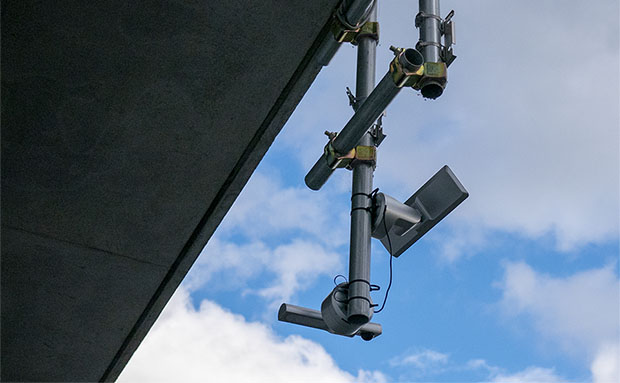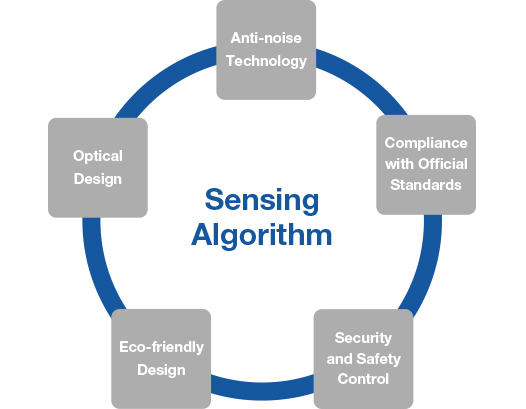Sensing Algorithm

Humans have five senses of sight, hearing, smell, taste and touch. The brain is the central processor of information from these five senses, which the body uses to make decisions and for movement.The central processing system that is the brain is an exceptionally advanced and precise organ that cannot be easily emulated by man-made technology; yet there are also areas that it cannot perceive with just the five senses.
Optex sensing technology acts in the place of humans, while also attempting to quantify the areas that people cannot sense themselves.
Optex has extensive expertise in the properties of a variety of sensors, including infrared rays.We identify the optimal sensors in our range for each site, and sometimes combine them as required, so that we can meet the needs for sensing technology and services from customers around the world.
Reliable and Stable Sensing, and Smart Data
In sensing, it is important to have algorithms that control physical changes, and it is essential to be able to incorporate the accumulation and know-how of multiple elemental technologies. This requires a good understanding of the environment where the sensors will be used, and continual research on signal processing that will detect only the objects and information for detection. We also use edge computing to offer our customers Smart Data, which extracts just the required information from the multiple signals received by the sensors, and only transmits the necessary parts of that information. This enables real time delivery to the sensor signal receiving side of information that can be used without any complex diagnosis or analysis.
Sensing Algorithms
How well can the quantitative data obtained from sensors emulate the functions of human senses?
Optex has high-quality sensors that can thoroughly read the environment they are being used in and understand many more of the actual and potential needs there, and then process this information. Although there is also the essential element of computing capabilities to consider, it is the absolute ability to perform on site that determines the quality of a sensor. The numerical data that sensors spit out becomes information by adding, subtracting, multiplying, dividing, comparing and converting it. Engineers fine tune the sensing to suit changes in the environment from day to night.
Sensing for Outdoor
Compared to an indoor environment, the outdoors is filled with a multitude of noise signals from the natural environment that can cause sensors to operate incorrectly. These include falling rain and snow, trees swaying in the wind, sunlight, insects, and small animals. Sensors that are used outdoors need to be able to adequately withstand these elements that can cause them to malfunction.
Optex was quick to start developing outdoor sensors, and since then we have been accumulating data on phenomena that can cause sensors to operate erroneously. We are using this data to develop algorithms that are resilient against noise from the natural environment, and continuing with the development of sensors that can also withstand the unfavorable environment of the outdoors. We also receive feedback from sites around the world where our sensors are installed, and use this information on Optex sensors to continually improve detection standards.

Technical Development for Optimization
Anti-noise Technology
Hardware design to minimize various noise
Commercialization of only products that clear numerous independently-determined environmental assessments
Optical Design
Full coverage of high-density areas using optical simulation
Packaging technology for miniaturization
Compliance with Official Standards
Conformance and compliance with all types of global standards
Conformance and compliance with standards and guidelines stipulated in each industry (CE Marking, EN Standards [TUV Certification], ANSI Standards, JIS Standards, etc.)
Eco-friendly Design
Stipulating 15 types of restricted-use materials and 10 types of voluntary-control materials, and ensuring all components are harmless
Conformance with the RoHS Directive, and making products lead-free
Design that minimizes the impact of CO2 during usage
Security and Safety Control
Using self-diagnosis and failsafe functions when sensors malfunction or breakdown, so as to ensure systems keep functioning
Proposing preventative maintenance measures for maintaining functionality

Contact phone number
- Headquarters
- +81-77-579-8000
Contact form
